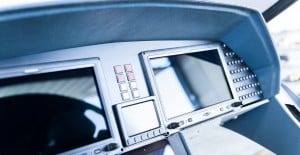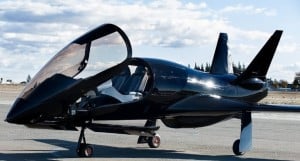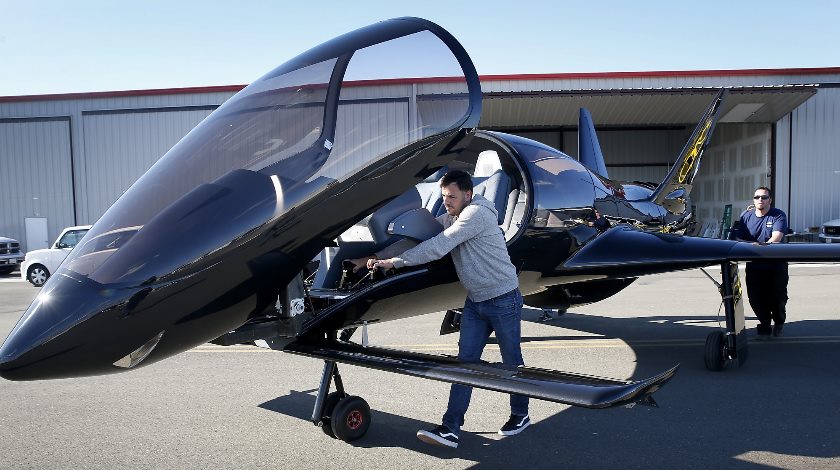Photo: sfchronicle.com
Reading Time: 4 minutesYou wouldn’t think that an iPad in an airplane is a big deal, but when it’s used as part of flight control, it’s not only big, it’s verboten.
Three months ago, Cobalt aircraft made a big splash when it introduced the Valkyrie Co50, a Canard-style five seater, with great looks and record-shattering speed.
The Valkyrie Co50 can fly at up to 260 knots (roughly 299 MPH), significantly faster than other single-engine aircraft, which typically cruise at a max of roughly 242 knots. The plane stands at 30 feet long and 10 feet high, with a wingspan of 30 feet. Its unusual design, forward stabilizer and rear-positioned engine promised an usually smooth ride with, even in low altitudes, little-to-no-chance of a stall. According to Cobalt, 30% of fatal aircraft accidents are in low altitude stalls, a claim supported by the the Air Safety Institute’s 2012 general aviation accidents study.
The company quickly racked up a reported $50 million in orders for a $749,000 aircraft that won’t arrive until 2017, if Cobalt and its customers are lucky. The hold-up? FAA Type Certificate process, which Cobalt describes as long, cumbersome and expensive.
“Initial investors ask how much it costs to certify a plane. No one has an answer,” said Cobalt founder and CEO David Loury in a discussion with Mashable days before the company announced the extent of its Valkyrie Co50 back orders.
The French entrepreneur and pilot understands the need for certification, “because it’s good for the safety of everyone,” but he contends that the process is needlessly slowing down the industry and increasing costs.

For example, when Loury was designing his planes, he found a $30 fuel valve — one that’s typically used in tractors — would work in the Valkyrie. However, according to Loury, when sold as a certified aviation part, the same valve costs $3,000.
Regulators can’t keep up with what the aircraft designers are doing, said Loury, and, worse, the FAA continues to add new regulations — usually in response to air disasters.
Loury contends that, on Cobalt’s end, especially for things they cannot test in the air like a “ground vibration survey,” it takes “six months of work and thousands of dollars for one [certification] paragraph.”
So while Cobalt continues to work on satisfying those pages and pages of regulations with the upcoming Co50, the aeronautics company has fast-tracked its experimental aircraft, the Valkyrie-X. It, too, needs flight certification from the FAA to fly. However, as an experimental aircraft, it can be sold to a customer in advance of the certification process. Plus, the experimental aircraft certification is far less strict and also prevents anyone who buys a $595,000 Valkyrie-X from using it for business or as an air-taxi.
Customers actually buy an uncertified Valkyrie-X from Cobalt and then the customer and Cobalt go through the certification process together. At that point, it is up to the customer to obtain the experimental certificate from the FAA. With that done, the aircraft can be used in air-racing, exhibitions (air shows) and for research and development.

An experimental plan also means that Cobalt can do things not necessarily sanctioned by the FAA – even though the FAA inspects every Valkyrie-X for air-worthiness.
The FAA has approved the iPad for use as secondary navigation devices, but in the Valkyrie-X, it’s used to communicate with main flight system over Bluetooth. “That’s not possible in certified world, but is possible in experimental world,” said Loury. He also said that tablet-based controls are the wave of the future and fully expects that aviation will ultimately have 60%-to-70% software-based controls.
Loury is not alone in his concerns about the FAA’s seeming allergy to innovation. A recent Slate post highlights five areas where the FAA’s overly cautious approach may be holding back advancements in electric-powered air-travel, flight speed and autonomous passenger vehicles.
At January’s CES 2016 in Las Vegas, Ehang introduced an exciting, 500 lb. autonomous air taxi that basically flies like a giant quad-copter. The company said it was working with the FAA to secure U.S. flight certification. However, the FAA’s reputation for caution is so pervasive that no one believes that the FAA will ever certify autonomous passenger vehicles for commercial flight.

The strategy of working with the FAA to satisfy regulatory demands on the Valkyrie Co50, while still selling the experimental Valkyrie-X right now is one way Cobalt protects itself from a fate that’s befallen other upstart aircraft manufacturers.
“It’s not like other companies where you launch a product and people buy it because it’s cool. Here you’re putting your life at stake with an unknown name, so it’s difficult to launch an airplane manufacturing company,” said Loury who told me that smaller aeronautics firms like Eclipse (now part One Aviation) and Adam Aircraft Industries have suffered because they got stuck behind the expensive and time-consuming FAA barrier.
When asked about the Valkyrie Co50 certification process and how regulations might be impeding aircraft innovation, the FAA sent Mashable this comment:
The time to obtain a U.S. certificate on an aircraft like the Co50 depends on the type of certification being sought and the complexity of the product. Regulations allow for three years from the date of application for a [Title] 14 CFR Part 23 certification with options for extensions of the certification program. To date, we have not received a formal application to certificate the Cobalt Co50 Valkyrie.
It’s true, Cobalt is still working its way through satisfying all the regulations before they submit their application to the FAA.
When Cobalt does finally submit the Valkyrie Co50 for certification, the FAA could grant it in three years, but it might also take four or more years. It’s a question everyone asks Loury. He really doesn’t have an answer. “I keep pushing because we have no reference…in how long it takes.”

